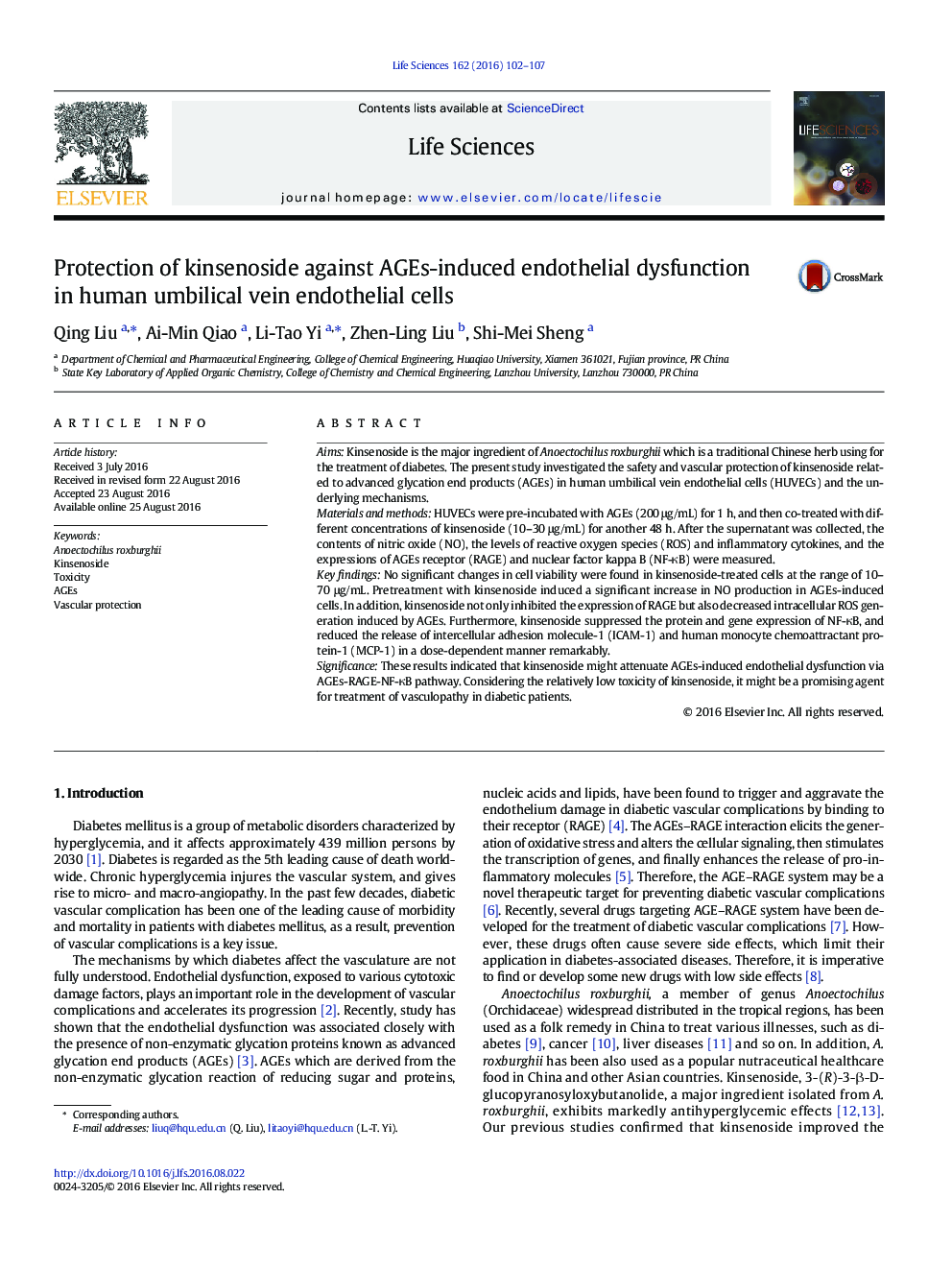| Article ID | Journal | Published Year | Pages | File Type |
|---|---|---|---|---|
| 5841278 | Life Sciences | 2016 | 6 Pages |
AimsKinsenoside is the major ingredient of Anoectochilus roxburghii which is a traditional Chinese herb using for the treatment of diabetes. The present study investigated the safety and vascular protection of kinsenoside related to advanced glycation end products (AGEs) in human umbilical vein endothelial cells (HUVECs) and the underlying mechanisms.Materials and methodsHUVECs were pre-incubated with AGEs (200 μg/mL) for 1 h, and then co-treated with different concentrations of kinsenoside (10-30 μg/mL) for another 48 h. After the supernatant was collected, the contents of nitric oxide (NO), the levels of reactive oxygen species (ROS) and inflammatory cytokines, and the expressions of AGEs receptor (RAGE) and nuclear factor kappa B (NF-κB) were measured.Key findingsNo significant changes in cell viability were found in kinsenoside-treated cells at the range of 10-70 μg/mL. Pretreatment with kinsenoside induced a significant increase in NO production in AGEs-induced cells. In addition, kinsenoside not only inhibited the expression of RAGE but also decreased intracellular ROS generation induced by AGEs. Furthermore, kinsenoside suppressed the protein and gene expression of NF-κB, and reduced the release of intercellular adhesion molecule-1 (ICAM-1) and human monocyte chemoattractant protein-1 (MCP-1) in a dose-dependent manner remarkably.SignificanceThese results indicated that kinsenoside might attenuate AGEs-induced endothelial dysfunction via AGEs-RAGE-NF-κB pathway. Considering the relatively low toxicity of kinsenoside, it might be a promising agent for treatment of vasculopathy in diabetic patients.
